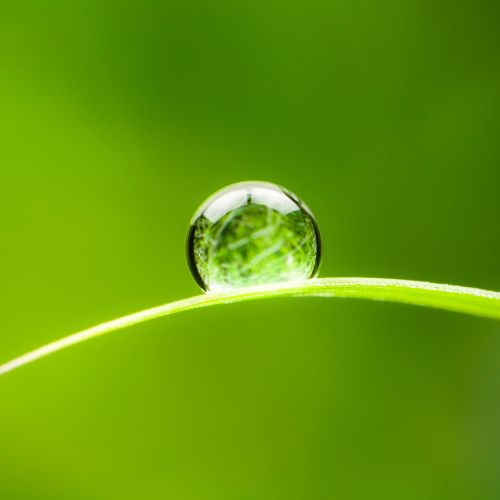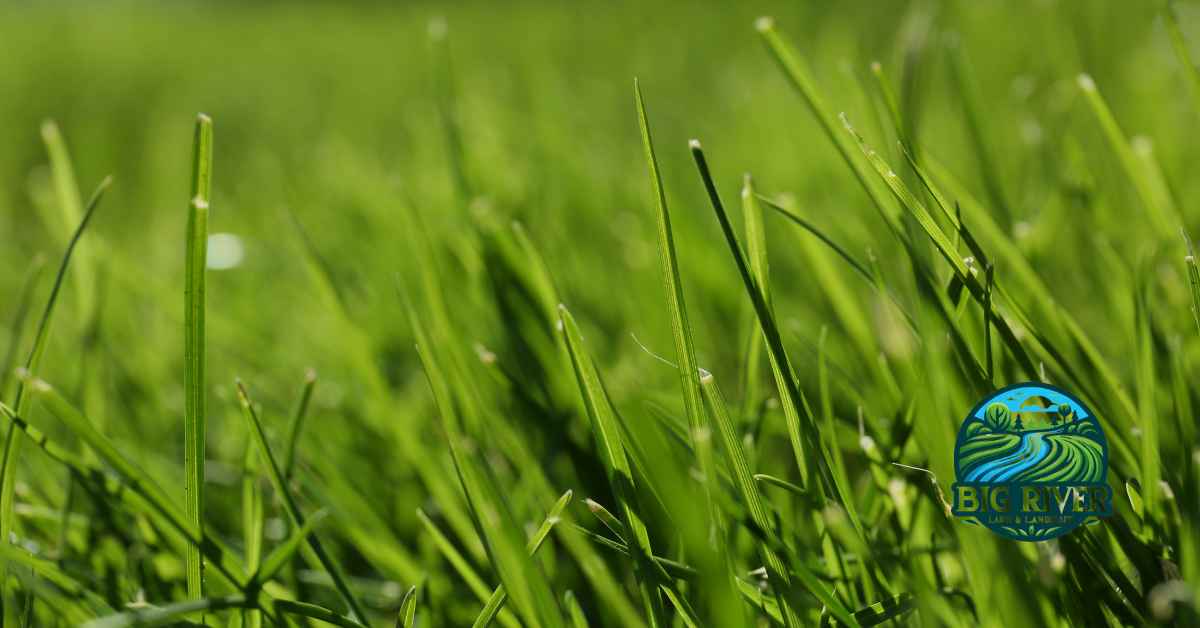Grass, the verdant carpet that blankets landscapes and fields, is not just a simple green cover but a cornerstone of ecosystems and a canvas for landscaping creativity. Understanding the myriad types of grass is essential for anyone looking to cultivate lush lawns or manage agricultural fields. Each type has unique characteristics and requirements, from cool-season varieties that thrive in moderate climates to warm-season grasses built for heat. So, wondering what are the different types of grass. This comprehensive guide navigates through the vast world of grass, offering insights into its importance, characteristics, ideal growing conditions, maintenance needs, and troubleshooting tips.
Importance of Grass in Landscaping and Agriculture
Grass plays a crucial role in both landscaping and agriculture. Landscaping forms the backbone of lawns, providing aesthetic appeal, erosion control, and a comfortable outdoor space. In agriculture, grass is a primary forage source for livestock, helps prevent soil erosion, and contributes to overall ecosystem health.
- Grass is a foundational element in both natural and cultivated landscapes, stabilizing soil and preventing erosion.
- In landscaping, grass creates visually appealing green spaces, offering a comfortable and inviting environment for recreation and relaxation.
- Grassland ecosystems support diverse wildlife habitats, serving as food sources and shelter for various species.
- In agriculture, grass is a primary source of forage for livestock, contributing to the production of meat, milk, and other animal products.
- Grasses are crucial in carbon sequestration, helping mitigate climate change by absorbing and storing atmospheric carbon dioxide.
- Grasslands contribute to the overall health of ecosystems by promoting biodiversity, nutrient cycling, and water infiltration.
- Understanding the importance of grass in landscaping and agriculture is essential for sustainable land management practices and environmental stewardship.
Overview of Different Types of Grass
Grasses come in various types, each with its own unique characteristics and suitability for different environments. Understanding the different types of grasses is essential for creating and maintaining healthy lawns and landscapes. When it comes to lawn grass types, homeowners have various options based on their specific preferences and environmental conditions. Some popular types include Kentucky bluegrass, Bermuda grass, tall fescue, Zoysia grass, St. Augustine grass, and buffalograss. Each type offers unique characteristics such as texture, color, durability, and tolerance to heat, drought, shade, and foot traffic.
Purpose and Structure of the Guide
This guide aims to provide a comprehensive overview of the different types of grasses and lawn grasses, their characteristics, ideal growing conditions, and practical applications. By delving into the intricacies of grass selection and maintenance, readers will gain valuable insights into cultivating thriving green spaces.
Understanding Grass Basics
Before delving into the specifics of different grass types, it’s essential to grasp the fundamentals and types of grass for lawns. From grass’s defining characteristics to its role in ecosystems and its growth and maintenance requirements, this section lays the groundwork for a deeper understanding of these versatile plants.
Definition and Characteristics of Grass
Grass is a flowering plant characterized by narrow leaves, jointed stems, and fibrous root systems. Its adaptability, resilience, and ability to thrive in various conditions make it a versatile component of ecosystems worldwide.
Growth and Maintenance Requirements
Grasses play a vital role in ecosystems by stabilizing soil, cycling nutrients, providing habitat and food for wildlife, and contributing to carbon sequestration. Different types of grass for lawns form the foundation of many terrestrial ecosystems and are integral to biodiversity and ecosystem health.
Definition and Characteristics of Grass
Grass growth and maintenance requirements vary depending on species, climate, soil type, and management practices. Understanding these requirements of different types of grass lawns is essential for establishing and sustaining healthy grass lawns and landscapes.
Cool-Season Grasses
For regions with moderate climates and distinct seasonal changes, different types of cool season grasses offer the perfect balance of resilience and aesthetics. Cool season grass types, from, the iconic Kentucky bluegrass to the durable tall fescue, explore the diverse range of species that thrive in cooler temperatures and moderate moisture levels.
Definition and Characteristics
Cool-season grass types thrive in regions with moderate temperatures and ample moisture. They exhibit peak growth during the cooler months of spring and fall and may go dormant in hot summer weather.
Popular Varieties
Check out the popular varieties of different types of cool season grasses:
Kentucky Bluegrass
Known for its fine texture and rich green color, Kentucky bluegrass is a popular choice for lawns and athletic fields among different types of grass lawns.
Tall Fescue
Tall fescue is valued for its drought tolerance and durability, making it suitable for high-traffic areas.
Fine Fescue
Fine fescue varieties, including creeping red fescue and chewings fescue, are prized for their shade tolerance and low maintenance requirements.
Perennial Ryegrass
Perennial ryegrass is prized for its rapid establishment and lush, dark green appearance.
Ideal Growing Conditions
Cool-season grasses thrive in regions with cool to moderate temperatures (55-75°F) and consistent moisture levels. They prefer well-drained soils with a slightly acidic pH.
Uses and Applications
Different types of lawn grass are commonly planted in the cool-season and used for lawns, parks, golf courses, and athletic fields in regions with temperate climates.
Warm-Season Grasses
In hot and humid climates where summers reign supreme, warm season grass types emerge as the champions of resilience. Discover the beauty and durability of warm season grasses like Bermuda grass, the lushness of Zoysia grass, and the shade tolerance of St. Augustine grass as you delve into the world of warm-season turf.
Definition and Characteristics
Warm-season grasses thrive in hot climates and exhibit peak growth during the summer months. They are well-adapted to drought conditions and often have deep root systems.
Popular Varieties
When considering different types of grass seed for the warm season, various types of warm season grass options are available to suit various preferences and environmental conditions.
Bermuda Grass
Bermuda grass is known for its dense, fine-textured turf and excellent heat tolerance.
Zoysia Grass
Zoysia grass forms a dense, resilient turf and is prized for its tolerance to heat, drought, and heavy foot traffic.
St. Augustine Grass
St. Augustine grass is valued for its lush, dark green appearance and shade tolerance.
Bahia Grass
Bahia grass is valued for its durability, drought tolerance, and low maintenance requirements.
Ideal Growing Conditions
Warm-season grasses thrive in regions with hot temperatures (80-95°F) and ample sunlight. They prefer well-drained soils with a neutral to slightly alkaline pH.
Uses and Applications
In the warm season, different types of lawn grass are commonly used for lawns, sports fields, golf courses, and commercial landscapes in regions with hot climates.
Transition Zone Grasses
Navigating the transitional climates between cool and warm regions requires a special breed of grass. Transition zone grasses, such as buffalograss and certain varieties of Zoysia and tall fescue, offer resilience and adaptability to fluctuating temperature extremes.
Definition and Characteristics
Transition zone grasses are adapted to regions with variable climates, experiencing both warm and cool temperature extremes throughout the year. They require careful selection and management to thrive in these challenging conditions.
Popular Varieties
When considering different types of grass seed for transition zone grasses, a wide range of options are available to suit various preferences and environmental conditions.
Buffalograss
Buffalograss is valued for its low water and maintenance requirements, making it well-suited to arid climates.
Centipedegrass
Centipedegrass is prized for its tolerance to shade and low-fertility soils.
Zoysia Grass (Some Varieties)
Certain varieties of zoysia grass are adapted to transition zone climates and offer a balance of heat and cold tolerance.
Tall Fescue (Some Varieties)
Select tall fescue varieties are suitable for transition zone climates, offering a mix of heat and cold tolerance.
Challenges and Considerations in Transition Zones
Transition zone climates present unique challenges for grass cultivation, including temperature extremes, variable precipitation, and soil variability. Careful selection of grass varieties and adaptive management practices are essential for success.
Uses and Applications
Transition zone grasses are commonly used in regions with transitional climates, where warm and cool-season grasses may struggle to thrive consistently.
Grass Selection and Maintenance
Choosing the right grass for your landscape is the beginning; maintaining its health and vitality requires careful attention and planning. This section provides a roadmap for success, from considering climate and soil type to implementing proper establishment and maintenance practices.
Factors to Consider When Choosing Grass Type
When selecting a grass type, consider climate, soil type, sunlight exposure, and water requirements. Choosing a grass variety suited to your specific conditions will ensure successful establishment and long-term performance.
Climate
- Consider the Local Climate: Choose grass species that are well-suited to your region’s temperature and precipitation patterns.
- Evaluate Temperature Extremes: Determine whether the grass type can tolerate both cold winters and hot summers or if it is better adapted to a specific climate range.
- Research Frost Tolerance: Some grass varieties are more resilient to frost damage, making them ideal for cooler climates.
Soil Type
- Assess Soil Texture: Determine whether your soil is sandy, loamy, or clay-based. This will impact water retention and nutrient availability.
- Consider Soil pH: Different grass species have varying preferences for soil pH levels, so test your soil and choose grass types that thrive in your specific soil conditions.
- Evaluate Drainage: Ensure that your soil has adequate drainage to prevent waterlogging, which can lead to root rot and other issues.

Sunlight Exposure
- Determine Sunlight Availability: Assess the sunlight your lawn receives throughout the day, considering any shade from buildings, trees, or other structures.
- Choose Shade-tolerant Varieties: If your lawn has partial or full shade areas, select grass species known for their ability to thrive in low-light conditions.
- Consider Sun-loving Grasses: For sunny areas, choose grass types that require full sun and can withstand intense heat and sunlight.
Water Requirements
- Evaluate Water Availability: Consider the availability of water for irrigation and any restrictions or regulations regarding water usage in your area.
- Choose Drought-tolerant Varieties: Select grass species with low water requirements and can withstand periods of drought without sacrificing appearance or health.
- Consider Water Conservation: Opt for grass types that promote water conservation through deep root systems, reduced evapotranspiration rates, or other water-saving mechanisms.
Steps for Establishing a Healthy Grass Lawn
Thinking of having a healthy grass lawn? Check out the healthy steps for establishing a healthy grass lawn:
Soil Preparation
Prepare the soil by tilling, leveling, and amending as needed to create a suitable seedbed.
Seeding or Sodding
Choose the appropriate method for establishing your lawn, whether seeding or sodding, based on your preferences and budget.
Watering and Fertilizing
Provide adequate water and nutrients to support grass establishment and ongoing growth. Ensure proper timing of fertilization for optimal health and resilience.
Mowing and Maintenance Practices
Adopt proper mowing heights and frequencies and weed control and pest management strategies with lawn types of grass to maintain a healthy lawn.
Troubleshooting Common Grass Problems
Even the most well-tended lawns can encounter challenges. From pests and diseases to weed invasions and environmental stressors, learn how to effectively identify and address common grass problems.
Pests and Diseases
Monitor for common pests and diseases affecting grass health, such as grubs, fungal infections, and insect infestations. Implement integrated pest management strategies to minimize damage and promote recovery.
Weed Control
Implement weed control measures to prevent invasive species from competing with desirable grasses for resources. Use a combination of cultural, mechanical, and chemical control methods as needed.
Brown Patches and Bare Spots
Identify the underlying causes of brown patches and bare spots, such as compaction, poor drainage, or nutrient deficiencies, and take corrective action to restore grass health and density.
Overwatering and Underwatering
Monitor soil moisture levels and adjust watering practices to avoid overwatering or underwatering, which can stress grass plants and promote disease development.
Sustainable Lawn Practices
As environmental awareness grows, so does the need for sustainable lawn care practices. Explore water conservation techniques, organic lawn care methods, and alternative lawn options to promote eco-friendly landscaping practices and reduce environmental impact.
Water Conservation Techniques
Implement water-saving techniques such as proper irrigation scheduling, rainwater harvesting, and drought-tolerant grass varieties to conserve water and promote sustainable lawn care.

Organic Lawn Care Methods
Adopt organic lawn care practices such as composting, mulching, and natural fertilization to promote soil health, biodiversity, and environmental sustainability.
Alternative Lawn Options (e.g., Clover Lawns)
Explore alternative lawn options, such as clover lawns, which offer benefits such as nitrogen fixation, drought tolerance, and resistance to pests and diseases.
Conclusion
Grasses are diverse and adaptable plants crucial in landscaping, agriculture, and ecosystem health. Homeowners, landscapers, and agricultural producers can make informed decisions to create and maintain healthy, sustainable green spaces by understanding the different types of grass and their unique characteristics.
FAQs on Types of Grasses
How Do I Choose a Grass Type?
When choosing a grass type for your specific needs and conditions, consider factors such as climate, soil type, sunlight exposure, and water requirements.
How Do You Know What Type of Grass?
Consult local extension offices, nurseries, or online resources for guidance on selecting the most suitable grass types for your region. Big River Lawn and Landscape is available to meet your needs.
What Is the Easiest Grass to Grow?
Grasses such as tall fescue and certain varieties of Bermuda grass are known for their ease of establishment and low maintenance requirements.
What Grass Needs the Least Maintenance?
Low-maintenance grasses such as fine fescue and buffalograss require minimal watering, mowing, and fertilization compared to other varieties.
Can You Mix Grass Types?
Mixing grass types can be beneficial for enhancing turf resilience, adaptability, and aesthetic diversity, but it requires careful planning and management.
What Is the Best Grass Type Combo?
The best grass type combo depends on climate, soil type, and intended use. Consult a local expert to determine the most suitable combination for your specific conditions.



